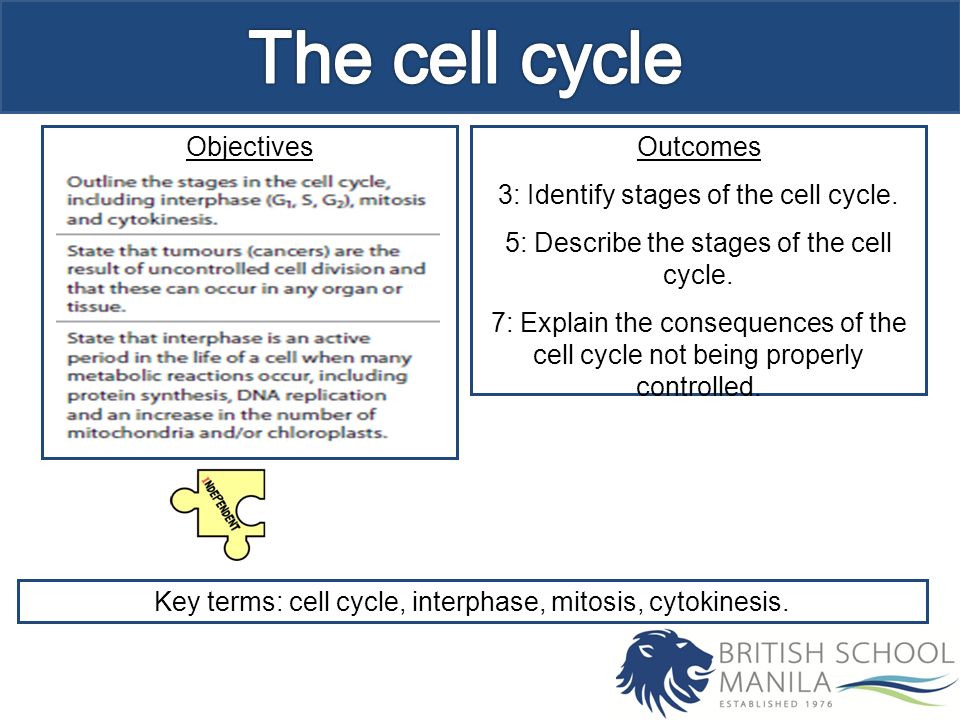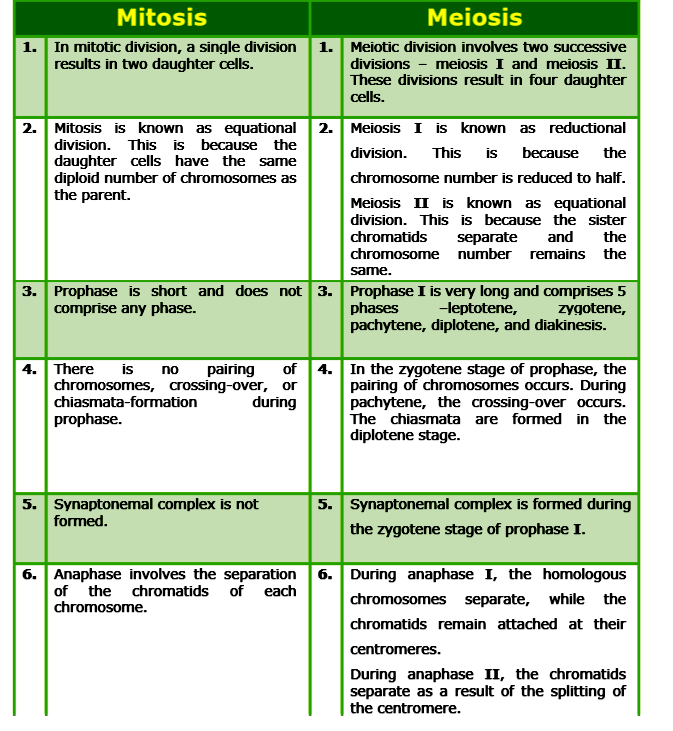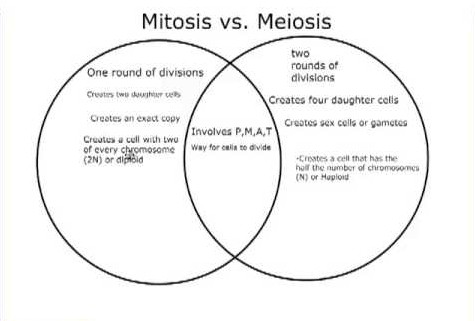Cell division is the process by which a single cell divides into two daughter cells. There are two main types of cell division: mitosis and meiosis.
Mitosis is a type of cell division that occurs in somatic cells, or cells that make up the body's tissues and organs. During mitosis, a single cell divides into two identical daughter cells, each with the same number of chromosomes as the parent cell. This process is essential for the growth and repair of tissues in the body.
The process of mitosis is divided into four main stages: prophase, metaphase, anaphase, and telophase. During prophase, the cell's nucleus begins to condense and the chromosomes within it become visible under a microscope. In metaphase, the chromosomes line up in the center of the cell. In anaphase, the chromosomes are pulled apart and move to opposite ends of the cell. Finally, in telophase, a new nucleus forms in each daughter cell and the cell membrane begins to divide, forming two separate cells.
Meiosis, on the other hand, is a type of cell division that occurs in reproductive cells, or gametes. During meiosis, a single cell divides into four daughter cells, each with half the number of chromosomes as the parent cell. This process is essential for sexual reproduction because it allows for genetic variation in the offspring.
Like mitosis, meiosis is also divided into four main stages: prophase I, metaphase I, anaphase I, and telophase I. During prophase I, the cell's nucleus begins to condense and the chromosomes within it become visible under a microscope. In metaphase I, the chromosomes line up in the center of the cell. In anaphase I, the chromosomes are pulled apart and move to opposite ends of the cell. Finally, in telophase I, a new nucleus forms in each daughter cell and the cell membrane begins to divide, forming two cells.
However, meiosis does not stop at telophase I. Instead, the process continues with a second round of cell division, known as meiosis II. During meiosis II, the two daughter cells from meiosis I divide again, resulting in a total of four daughter cells. Each of these daughter cells has half the number of chromosomes as the parent cell.
In summary, the main difference between mitosis and meiosis is the number of daughter cells produced and the number of chromosomes in each daughter cell. Mitosis produces two identical daughter cells with the same number of chromosomes as the parent cell, while meiosis produces four daughter cells with half the number of chromosomes as the parent cell. Both processes are essential for the growth and reproduction of organisms, but they serve different functions in the body.









